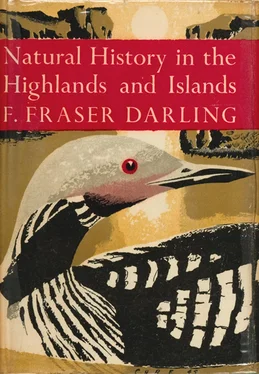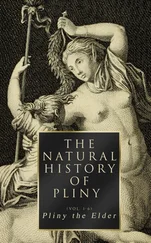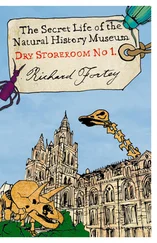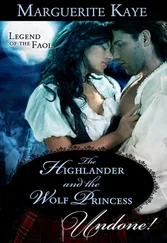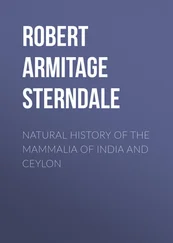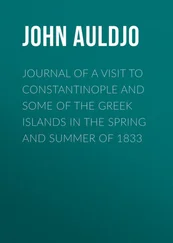The island of Scarba, of about 4,500 acres, high and rocky, lies north of Jura. The Gulf of Corrievreckan is in the narrow sound between the two islands. This celebrated whirlpool and overfalls is caused by the strong tide from the Atlantic being funnelled through a strait, the floor of which is extremely uneven. The sound is quiet at the slack of the tide but is dangerous to small craft when the tide is running. The largest whirlpool is on the Scarba side of the sound, but there is a spectacular backwash on to the Jura coast which used to be reckoned very dangerous in the days of sailing boats. The maximum current is probably about 8 1/ 2knots which is very fast for a large bulk of water. No herring drifter or ordinary motor fishing-boat could hope to make headway against such a current, for their maximum speed in calm water is not more than 10 knots.
This West Highland zone has what the North Minch lacks, a number of sizable islands which are not big enough to lose their oceanic quality, and not so small that they are utterly windswept. The islands of Colonsay and Oronsay, west of Jura, are an excellent example of islands which have the best of almost all worlds. Naturalists may be glad that Colonsay is in the possession of one who recognizes its value and beauty in the natural history of the West. Most of the island is of Torridonian sandstone of a different complex from that farther north, but there are overlays here and there of limestone and its derivative soil, and the 100-foot beaches are another place of good soil. There are sand dunes, cliffs and rocky beaches where several rare maritime plants are to be found. There are fresh-water lochs with water lilies and the royal fern in profusion. Natural woods of birch, oak, aspen, rowan, hazel, willow and holly also occur, and beech has been planted. The sight of these, so near the Atlantic and its gales, may be imagined from this short passage from Loder’s exhaustive book:
“The woods are being rejuvenated by young plantations of Birch and Aspen, which are springing up naturally and contending for supremacy with an annual luxuriant growth of bracken. The Woodbine twines over the trees, and festoons along the edges of the numerous rocky gullies that cut up these slopes. Ivy has climbed up and formed pretty evergreens of the more stunted of the forest trees. The Prickly-Toothed Buckler Fern grows in profusion, and the little Filmy Fern is also to be seen under mossy banks.”
There has been considerable planting of coniferous and deciduous trees for amenity in this Atlantic island so that it now presents a luxuriant and well-wooded aspect in the neighbourhood of the house. But in gazing on these woods now and noting Colonsay’s wealth of small birds, we should remember the effort entailed in beginning to establish these conditions. Loder says:
“When planting in the island first began, the trees made so little headway that it was considered amply satisfactory if they formed good cover. For the first ten years or so they made little progress, and many places had to be planted over and over again. Protection from animals and weather was provided in the first instance by dry-stone dykes, 5 feet high. Alder and Sea Buckthorn were planted along the most exposed edges. Alders and various species of Poplar were used in wet situations but the poplars did not last well, and were liable to be blown over. It was only as the trees made shelter for each other that they began to show any vigorous growth. Indigenous species such as Birch, Oak and Rowan, have sprung up on hilly ground where the planted trees failed to establish themselves.”
The trunks of trees in these Atlantic places tend to become covered with lichens such as Parmelia perlata and Usnea barbata , and mosses such as Eurhynchium myosucoides (on birch), Ulota phyllantha, Hypnum cupressiforme and Brachythecium rutabulum. These trees seem to be much more affected by the humid climate than such exotics as Escallonia, Ceanothus , Verbena and Mimosa ( Acacia ) which grow luxuriantly. This is one aspect of Colonsay, but there are also its sedgy and heathery moors like those of many another island of the West, and at the southern tip, where the Atlantic has full play over the Torridonian and mudstone slabs gently rising from the sea to make platforms and pools near the tide level, the Atlantic grey seal breeds in fair numbers. Elsewhere, on the cliffs, kittiwakes, razorbills and guillemots breed; and there are three species of tern, arctic, common and little, breeding on the island.
Colonsay and Oronsay together might well be looked upon as an epitome of the West Highland world in its full range and consequences of Atlantic exposure and sheltered mildness.
Farther to the north-west are Coll and Tiree, two more islands which receive practically the full force of the Atlantic, but which show decided differences in natural history. Tiree is very low indeed. The rocky portion of the island, of Lewisian gneiss, reaches its highest point in Ben Hynish, 460 feet, but by far the greater part of Tiree (Plate 25) is but a few feet above sea level and composed of blown shell sand resting on a platform of gneiss. The island is one of good-sized arable crofts and is so far different from most West Highland districts that it has a Clydesdale horse-breeding society of its own. The sandy pastures of Tiree are deficient in cobalt but recent researches in mineral nutrition of animals have allowed the farmers of Tiree to dress the land with as little as 2 lbs. an acre of a cobalt salt and prevent the onset of pine in sheep. The island has particular interest for the birdwatcher: first, it is on a migration route and gets both summer and winter visitors which would not be seen anywhere in the North Minch, and its rich arable land also attracts a large number and variety of birds. Loch Vasapol of Tiree is a famous place for various duck. Tufted duck breed there and the gadwall is found there in winter though so uncommon elsewhere in the West. The vast beaches encourage certain waders, including the bar-tailed godwit, sanderling and greenshank. In the past the snipe-shooting was reckoned the best in Europe. Happily, there is less of it now.
Glacial action in Tiree is shown by the Ringing Stone, a huge rounded boulder of augite which probably came to rest there after a journey in the ice from Rum. The stone is marked by many ringed hollows on its surface.
The island of Coll, once one is within it, reminds one of the low gneiss country of Sutherland. Here the innumerable little hills are still smaller than in Sutherland and not so steep, none rising above 339 feet. The island presents a uniform rocky appearance when seen from a distance on the east side. On the west side of Coll are miles of shell-sand dunes, a feature which tends to be characteristic of many of the islands which meet the full force of the Atlantic and are low enough to have allowed the sand preliminary lodgment. The interior of Coll is just peat where it is not bare gneiss, yet with its western pastures it has always had the reputation of being a good place for cheese and sound dairy cattle. This island is important for the student, of distribution of plants in relation to the last glaciation and associated changed ocean levels.
The low, sandy islet of Gunna lies between Coll and Tiree. It is a great place for Sandwich, common and arctic terns and I believe the little tern nests there too. Such burrowers as the sheld-duck are plentiful, of course. Barnacle and grey lag geese are common in winter.
The small group of tertiary basalt islands known as the Treshnish Isles lie between Coll and Mull. The most southerly one has a rounded cone of an old volcano, 284 feet high, which gives the island the name of Dutchman’s Cap (Plate Va). The middle island of the group, Lunga, also has a volcanic mound rising to 337 feet, but the other small islands are all flat-topped with sheer sides of amorphous basalt resting on a platform of lava. This platform is of great importance in the natural history of the Inner Hebrides because it makes a breeding ground for the Atlantic grey seal. The Treshnish group, especially the Harp Rock of Lunga (Plate XIXa), is a nesting place of kittiwakes and auks and fulmars. Storm petrels nest in the Treshnish also, and the Manx shearwater on Lunga at least. The quality of grass on these islands is excellent and attracts a vast flock of barnacle geese in winter. The green rich grass of the islands is reflected again in the presence of large mixed flocks of starlings and peewits. In winter-time hundreds of blackbirds and a good many thrushes live on the Treshnish group. Lunga, being infested with thousands of rabbits, has a stock of seven buzzards.
Читать дальше
